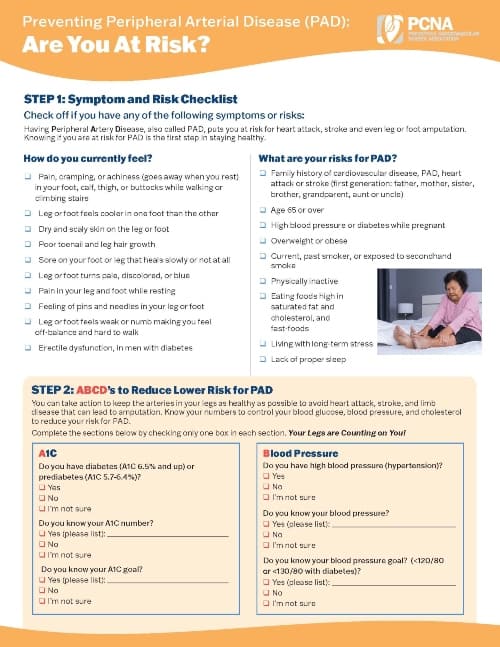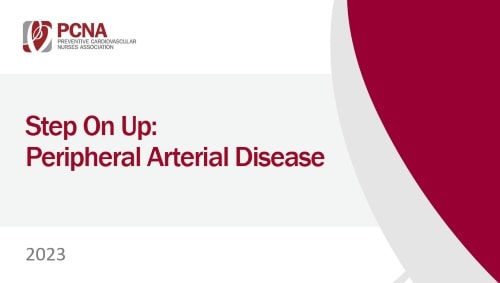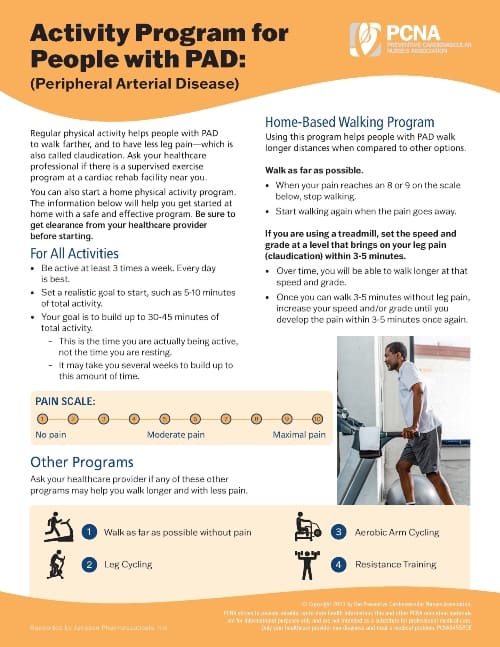Peripheral Artery Disease Resources for Providers
Peripheral artery disease (PAD) and heart disease share the same risk factors and often co-exist. PAD may be the first sign of atherosclerosis impacting the heart and brain. This life-threatening condition can be managed with proper care. PCNA has put together these helpful tools for clinicians who see patients with PAD.

PAD Screening Tool
Identify patients with Peripheral Arterial Disease (PAD) with this four-page screening tool. The questionnaire focuses on risk factors for PAD, walks clinicians through clinical tests to diagnose PAD, and helps patients develop an action plan.
This tool can be used in either clinical or outreach settings. Use our screening event toolkit to plan your next cardiovascular-related screening event.
English
Free to download (login required)

Screening Slidedeck
This 18-slide presentation covers the basics of peripheral artery disease (PAD), including risk factors, tests, and treatments.
The tool can be utilized in outreach to your communities, either as a stand-alone screening or in tandem with other activities such as at community health fairs.

PAD Activity Program
Research in vascular exercise has demonstrated remarkable improvement in symptoms of leg pain (claudication) without expensive or invasive interventions. Regular walking programs are extremely helpful for patients with PAD and intermittent claudication.
This instruction sheet is designed to help get patients started with an activity program.

PAD Video Series
This video series will address some of the challenges and opportunities that go with managing patients with PAD. Videos include:
Disclaimer: Please be aware that these forms include a sample of current clinical guidelines. However, clinical guidelines (federal, state, local, or those issued by clinical organizations) change over time, so the reader should remember to investigate any recent legal or clinical developments.
